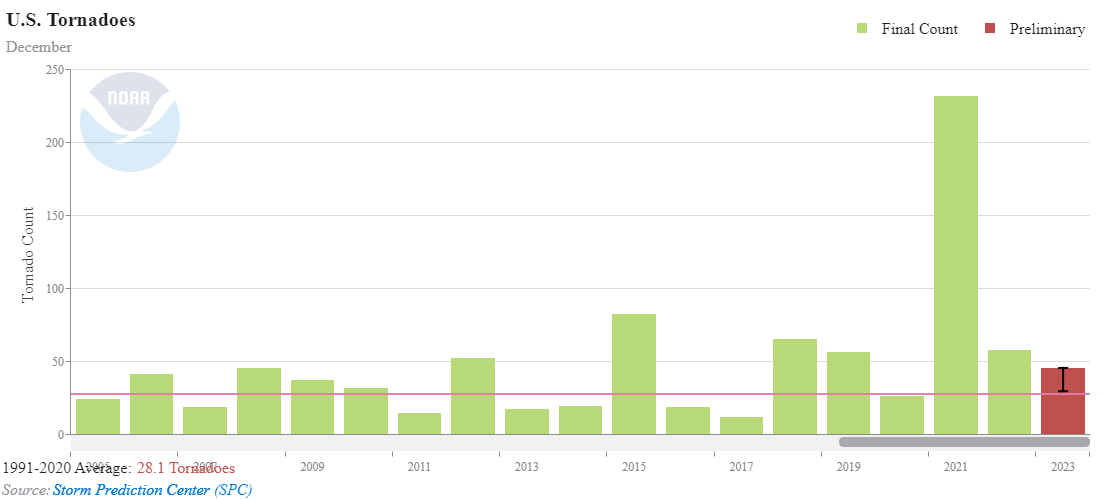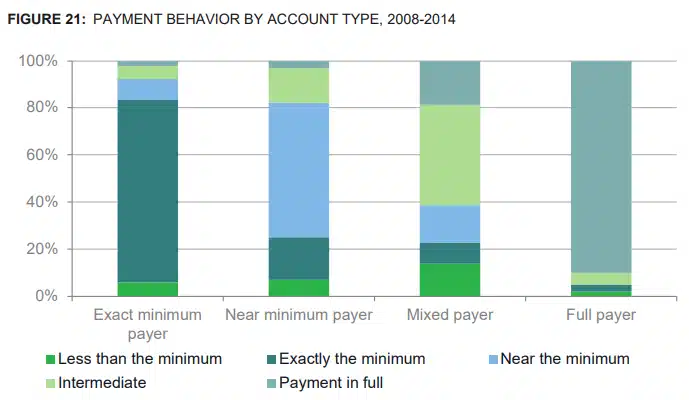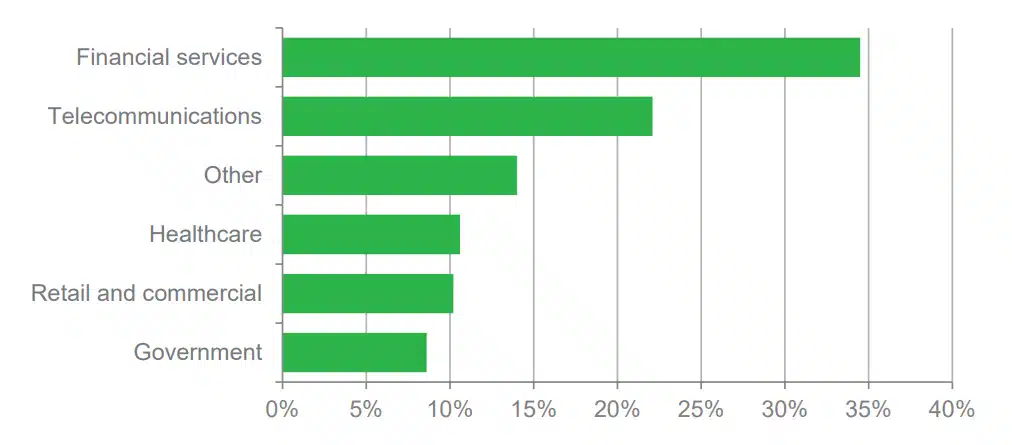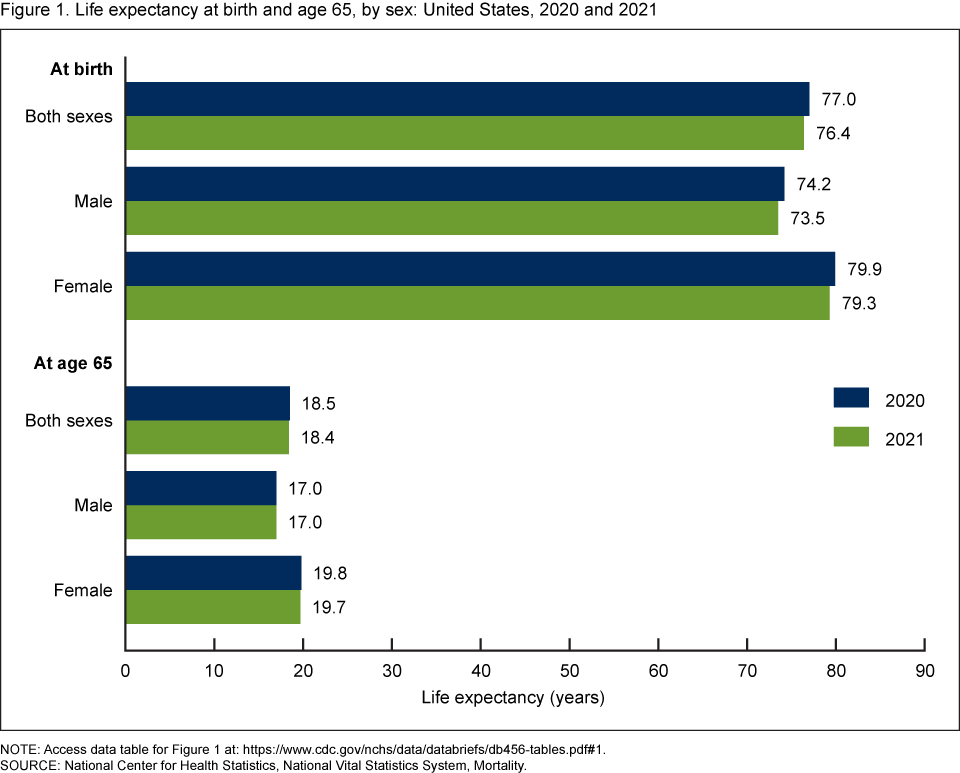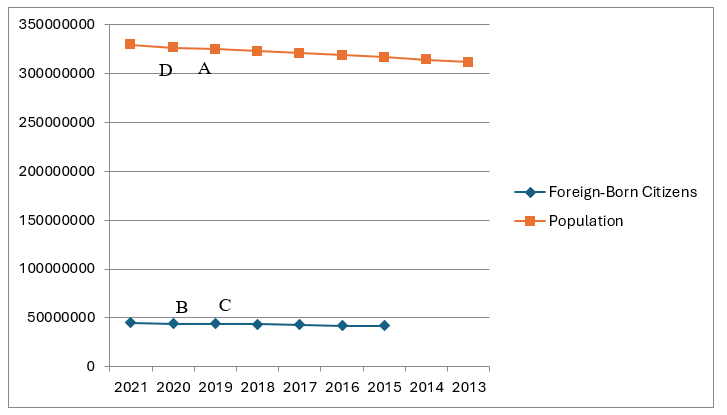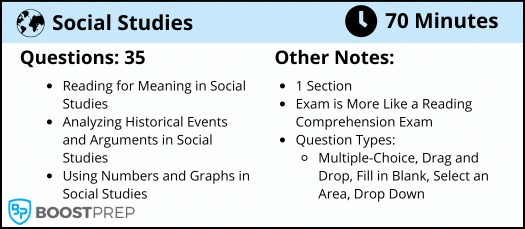Answer the questions in our GED social studies practice test below. Our exam includes 20 realistic questions that mimic the style of the actual GED social studies exam.
Click on the “Start Exam” button to begin.
GED Social Studies Diagnostic Pretest
Exam Summary
0 of 20 Questions completed
Questions:
Information
You have already completed the exam before. Hence you can not start it again.
Exam is loading…
You must sign in or sign up to start the exam.
You must first complete the following:
Results
Results
Time has elapsed
You have reached 0 of 0 point(s), (0)
Earned Point(s): 0 of 0, (0)
0 Essay(s) Pending (Possible Point(s): 0)
Categories
- GED Analyzing Historical Events and Arguments 0%
- GED Reading for Meaning in Social Studies 0%
- GED Using Numbers and Graphics in Social Studies 0%
-
Keep Studying: We recommend that you keep studying. Your score is indicative of someone who should continue to brush up on GED social studies. Take some of our full-length practice exams.
-
Almost There: We recommend that you keep studying. You may be able to pass the GED social studies exam right now, but it will be close. Take some of our full-length practice exams.
-
You Are Ready: We feel you are ready for the GED social studies exam. To be safe, you may want to take one of our full-length exams to ensure you are fully prepared.
- 1
- 2
- 3
- 4
- 5
- 6
- 7
- 8
- 9
- 10
- 11
- 12
- 13
- 14
- 15
- 16
- 17
- 18
- 19
- 20
- Current
- Review
- Answered
- Correct
- Incorrect
-
Question 1 of 20
1. Question
Tornado statistics for the Contiguous U.S. are provided by the Storm Prediction Center (SPC) and are available from December 2005—December 2023.
Considering the data on U.S. tornadoes from 2005 to 2023, which of the following statements best addresses the year 2023?
CorrectIncorrect -
Question 2 of 20
2. Question
CBP Trade Statistics*
Imports and Revenue Collections FY 2018 FY 2019 FY 2020 FY 2021 FY 2022 Total Import Value for Goods $2.64 trillion $2.67 trillion $2.73 trillion $2.8 trillion $3.35 trillion Total Entry Summaries 35.0 million 35.5 million 32.8 million 36.9 million 39.1 million Total Section 321 BOLs (de minimis) 410.5 million 503 million 636 million 771.5 million 685.1 million Total Duty, Taxes, and Fees Collected* $41.6 billion $71.9 billion $74.4 billion $93.8 billion $111.8 billion * Trade Remedy Duties Assessed = trade remedy duties due on imported goods.
Which of the following statements is most accurate regarding the relationship between the Total Import Value for Goods and the Total Duty, Taxes, and Fees Collected?
CorrectIncorrect -
Question 3 of 20
3. Question
Payments behavior
Figure 21 shows how different types of accounts were paid between the years 2008 and 2014. As shown, “exact minimum payer,” “near minimum payer,” and “full payer” accounts exhibit high levels of persistent behavior over time.
For example nearly 80% of the payments made by “exact minimum payer” accounts are exactly at the required minimum. Similarly, some 90% of payments made by “full payer” accounts are full payments.
Which of the following statements is true regarding the information above?
CorrectIncorrect -
Question 4 of 20
4. Question
GEORGE H. W. BUSH, “SPEECH AT PENN STATE UNIVERSITY” (23 SEPTEMBER 1992)
[13] This agenda that I have out there–this detailed agenda contains 13 actions, specific actions that I will pursue in the first–the first year of my second term–and I will fight for them harder than the Nittany Lions–fourth quarter, fourth down–goal to go. And that’s tough. That’s tough. (Applause) And so I’m asking the people for nothing more–nothing less–than a mandate to move this country forward. And I will work with the hundred and some newly elected Members of Congress who will listen to the people to move this country forward. (Applause)
[14] And yes, I want a debate–I want a debate over issues and an argument over ideas. And I will stand on my record–and I won’t let that Arkansas Governor run away from his record, either. (Applause) You know, I think the American people have a right to know what they’re buying into. Because remember, if you buy what candidate Clinton is selling–there’s no refund. There’s no rebate. Actually, it’s more like a permanent payment plan. And I don’t think we need that for the United States of America.
[15] On one issue–and I think it’s the fundamental issue in this campaign–my opponent and I have just agreed to disagree. It’s a question of how our economy grows–and how our country works.
[16] And it’s kind of like jeopardy–it all comes down to how you ask the question. And my opponent asks what makes the economy grow. And his answer–and look at his program–is government planners and projects and programs. And I ask who makes this country go. And my answer is you, the individual working men and women, building and buying the freedom of a market.
[17] My opponent believes that the Government will–quote–and here are his words “invest” unquote–your money smarter than you can. And I don’t see it that way. I say the smart money is on the smart people, like standing right out here in this beautiful day in Pennsylvania. (Applause)
[18] You know, it’s crazy. Some of y’all are studying history, and it’s a crazy thing. At the very moment when Russia and Eastern Europe and the whole world is turning our way, why would we want to go back their way? (Applause) And all of a sudden, all around the world, people are turning to free markets, and to free trade, and to freedom. And now that the world is finally catching on, what are we supposed to say–“just kidding,” and start their way? No.
Which of the following statements best reflects George H. W. Bush’s perspective on the role of government in economic growth, as conveyed in the provided speech at Penn State University?
CorrectIncorrect -
Question 5 of 20
5. Question
The Transcontinental Railroad, completed in 1869, was a monumental achievement in American history, connecting the vast continent from coast to coast. This engineering marvel began in Omaha, Nebraska, went through Wyoming, Utah, and Nevada, and stretched all the way to Sacramento, California, revolutionizing travel and commerce in the United States. Prior to its completion, travel across the country was a perilous and lengthy endeavor.
The railroad not only shortened the travel time significantly but also facilitated the movement of goods and people, contributing to the economic growth of the nation. However, it also had profound impacts on the indigenous populations, leading to the loss of their lands and a drastic change in their way of life. The construction of the Transcontinental Railroad symbolizes the industrial progress of the era and the complex dynamics of economic expansion and cultural displacement.
Based on the passage, which state in the US was the starting point of the Transcontinental Railroad, a project that revolutionized travel and commerce and impacted indigenous populations?
CorrectIncorrect -
Question 6 of 20
6. Question
President Bush Departs for NATO Summit
THE PRESIDENT: Good morning. Laura and I are on our way to a very important NATO summit, and members of the United States Congress are on their way back to Washington. And they have a lot of work to do.
Congress needs to pass FISA reform. Our intelligence professionals are waiting on the Congress to give them the tools they need to monitor terrorist communications. Congress also needs to provide liability protection to companies that may have helped save lives after September the 11th, 2001.
President George W. Bush, accompanied by Mrs. Laura Bush, talks to reporters before their departure to Ukraine Monday, March 31, 2008, on the South Lawn of the White House. President Bush urges Congress to pass the FISA reform bill and to act quickly to approve the Colombian Free Trade Agreement. President and Mrs. Laura Bush depart on a six-day trip to Ukraine, Romania, Croatia, and Russia. President Bush will have a scheduled meeting with Russian President Vladimir Putin. Congress needs to pass legislation to modernize the Federal Housing Administration. Struggling homeowners are waiting on Congress to act so that the FHA can help more Americans refinance their mortgages and stay in their homes.
Congress needs to act urgently to approve the Colombian Free Trade Agreement — a courageous ally in South America is waiting on Congress to approve an agreement that will strengthen our national security. American businesses, workers and farmers are waiting on Congress to level the playing field.
These are all vital priorities, and I ask members of both parties to get these important pieces of legislation to my desk as soon as possible.
Thank you very much.
What is the potential bias evident in President Bush’s speech, and how does it relate to the topics discussed?
CorrectIncorrect -
Question 7 of 20
7. Question
Emancipation Proclamation (1863)
President Abraham Lincoln issued the Emancipation Proclamation on January 1, 1863, announcing, “that all persons held as slaves” within the rebellious areas “are, and henceforward shall be free.”
Initially, the Civil War between North and South was fought by the North to prevent the secession of the Southern states and preserve the Union. Even though sectional conflicts over slavery had been a major cause of the war, ending slavery was not a goal of the war.
That changed on September 22, 1862, when President Lincoln issued his Preliminary Emancipation Proclamation, which stated that enslaved people in those states or parts of states still in rebellion as of January 1, 1863, would be declared free. One hundred days later, with the rebellion unabated, President issued the Emancipation Proclamation declaring “that all persons held as slaves” within the rebellious areas “are, and henceforward shall be free.”
Lincoln’s bold step to change the goals of the war was a military measure and came just a few days after the Union’s victory in the Battle of Antietam. With this Proclamation, he hoped to inspire all Black people, and enslaved people in the Confederacy in particular, to support the Union cause and to keep England and France from giving political recognition and military aid to the Confederacy.
Because it was a military measure, however, the Emancipation Proclamation was limited in many ways. It applied only to states that had seceded from the Union, leaving slavery untouched in the loyal border states. It also expressly exempted parts of the Confederacy that had already come under Union control. Most important, the freedom it promised depended upon Union military victory.
Although the Emancipation Proclamation did not end slavery in the nation, it did fundamentally transform the character of the war. After January 1, 1863, every advance of federal troops expanded the domain of freedom. Moreover, the Proclamation announced the acceptance of Black men into the Union Army and Navy, enabling the liberated to become liberators. By the end of the war, almost 200,000 Black soldiers and sailors had fought for the Union and freedom.
What was President Lincoln’s primary aim behind the Emancipation Proclamation, and how did he hope this measure would influence the war effort? Choose the most accurate goal and its expected impact from the options provided:
CorrectIncorrect -
Question 8 of 20
8. Question
The prohibition era in the United States, lasting from 1920 to 1933, was marked by the nationwide ban on the production, sale, and transportation of alcoholic beverages. Prohibition, legal prevention of the manufacture, sale, and transportation of alcoholic beverages in the United States from 1920 to 1933 under the terms of the Eighteenth Amendment.
Although the temperance movement, which was widely supported, had succeeded in bringing about this legislation, millions of Americans were willing to drink liquor (distilled spirits) illegally, which gave rise to bootlegging (the illegal production and sale of liquor) and speakeasies (illegal, secretive drinking establishments), both of which were capitalized upon by organized crime. As a result, the Prohibition era also is remembered as a period of gangsterism, characterized by competition and violent turf battles between criminal gangs.
This movement stemmed from the belief that alcohol consumption led to societal issues such as crime, poverty, and domestic violence. The 18th Amendment, ratified in 1919, officially prohibited alcohol, leading to the emergence of illegal speakeasies and the rise of organized crime, notably led by figures like Al Capone. The Prohibition era came to an end with the ratification of the 21st Amendment in 1933, repealing the ban on alcohol.
Which statement in the passage is factual regarding the Prohibition era?
CorrectIncorrect -
Question 9 of 20
9. Question
The Contributions of Immigrants to American Culture
Starting in 1875, a series of restrictions on immigration were enacted. They included bans on criminals, people with contagious diseases, polygamists, anarchists, beggars and importers of prostitutes. Other restrictions targeted the rising number of Asian immigrants, first limiting migration from China and later banning immigration from most Asian countries.
By the early 1900s, the nation’s predominant immigration flow shifted away from northern and western European nations and toward southern and eastern Europe. In response, laws were passed in 1921 and 1924 to try to restore earlier immigration patterns by capping total annual immigration and imposing numerical quotas based on immigrant nationality that favored northern and western European countries.
Long-standing immigration restrictions began to crumble in 1943, when a law allowed a limited number of Chinese to immigrate. In 1952, legislation allowed a limited number of visas for other Asians, and race was formally removed as grounds for exclusion. Although a presidential commission recommended scrapping the national-origins quota system, Congress did not go along.
In 1965, though, a combination of political, social and geopolitical factors led to passage of the landmark Immigration and Nationality Act that created a new system favoring family reunification and skilled immigrants, rather than country quotas. The law also imposed the first limits on immigration from the Western Hemisphere. Before then, Latin Americans had been allowed to enter the U.S. without many restrictions. Since enactment of the 1965 Immigration and Nationality Act, immigration has been dominated by people born in Asia and Latin America, rather than Europe.
Several laws since then have focused on refugees, paving the way for entrance of Indochinese refugees fleeing war violence in the 1970s and later including relief for other nationalities, including Chinese, Nicaraguans and Haitians. A 1990 law created the “temporary protective status” that has shielded immigrants, mainly Central Americans, from deportation to countries facing natural disasters, armed conflicts or other extraordinary conditions.
In 1986, Congress enacted another major law – the Immigration Reform and Control Act – that granted legalization to millions of unauthorized immigrants, mainly from Latin America, who met certain conditions. The law also imposed sanctions on employers who hired unauthorized immigrants. Subsequent laws in 1996, 2002 and 2006 were responses to concerns about terrorism and unauthorized immigration. These measures emphasized border control, prioritized enforcement of laws on hiring immigrants and tightened admissions eligibility.
Select the terms from below that would complete the sentence appropriately:
In 1965, a combination of political, social, and geopolitical factors led to the passage of the landmark (choose a, b, or c) and (choose d, e, or f) Act that created a new system favoring family reunification and skilled immigrants, rather than country quotas.
CorrectIncorrect -
Question 10 of 20
10. Question
Westward Expansion: Encounters at a Cultural Crossroads
The expansion of the United States into the territory west of the Mississippi River began with the Louisiana Purchase in 1803. President Thomas Jefferson nearly doubled the size of the nation by negotiating a price of $15 million to purchase 828,800 square miles from France, including all or part of 14 current states. In 1804, Jefferson sent an expedition led by Meriwether Lewis and William Clark to explore the area. The three-year expedition produced new understanding of the geography and resources of the western part of the continent. In the 1830s and 1840s, “manifest destiny”, the idea that the United States was destined to expand across the entire continent, was used to promote further territorial expansion. And the nation expanded quickly:
In 1845 the United States annexed Texas, in 1846 the Oregon Treaty ended British claims to Oregon Territory, in 1848, following the Mexican-American War, Mexico ceded much of the Southwest to the United States and in 1853 the United States bought an additional tract of land from Mexico.
States joined the Union at a relatively fast pace: California became a state in 1850 and Oregon in 1859, Nevada in 1864, Nebraska in 1867, Colorado in 1876, South and North Dakota, Montana, and Washington in 1889, Wyoming and Idaho in 1890, and Utah in 1896. As new towns like Denver and Phoenix sprang up in these new states, established towns and cities grew to accommodate the new industries and new populations that westward expansion brought with it.
A number of factors fueled migration west. Trappers, settlers, and miners headed West from the eastern United States prior to the Civil War. The Homestead Act, passed in 1862, allowed settlers to claim 160 acres of land for free. Another important factor was completion of the first transcontinental railroad in 1869; the railroad led to much more rapid western migration and also facilitated economic development.
What significant event nearly doubled the size of the United States in 1803, marking the beginning of westward expansion?
CorrectIncorrect -
Question 11 of 20
11. Question
THE ASSOCIATION BETWEEN EDUCATION AND HEALTH
Researchers have generally drawn from three broad theoretical perspectives to hypothesize the relationship between education and health. Much of the education-health research over the past two decades has been grounded in the Fundamental Cause Theory. The FCT posits that social factors such as education are ‘fundamental’ causes of health and disease because they determine access to a multitude of material and non-material resources such as income, safe neighborhoods, or healthier lifestyles, all of which protect or enhance health. The multiplicity of pathways means that even as some mechanisms change or become less important, other mechanisms will continue to channel the fundamental dis/advantages into differential health. The Human Capital Theory (HCT), borrowed from econometrics, conceptualizes education as an investment that yields returns via increased productivity. Education improves individuals’ knowledge, skills, reasoning, effectiveness, and a broad range of other abilities, which can be utilized to produce health. The third approach, the Signaling or Credentialing perspective has been used to explain the observed large discontinuities in health at 12 or 16 years of schooling, typically associated with the receipt of a high school and college degrees, respectively.
This perspective views earned credentials as a potent signal about one’s skills and abilities, and emphasizes the economic and social returns to such signals. Thus all three perspectives postulate a causal relationship between education and health and identify numerous mechanisms through which education influences health. The HCT specifies the mechanisms as embodied skills and abilities, FCT emphasizes the dynamism and flexibility of mechanisms, and credentialism identifies social responses to educational attainment. All three theoretical approaches, however, operationalize the complex process of schooling solely in terms of attainment and thus do not focus on differences in educational quality, type, or other institutional factors that might independently influence health. They also focus on individual-level factors: individual attainment, attainment effects, and mechanisms, and leave out the social context in which the education and health processes are embedded.
According to the passage, what distinguishes the Signaling or Credentialing perspective from the Fundamental Cause Theory (FCT) and Human Capital Theory (HCT) in explaining the relationship between education and health?
CorrectIncorrect -
Question 12 of 20
12. Question
Debt collection markets
Most if not all credit card issuers will make some effort to collect delinquent debts using their own employees. An estimated quarter million employees work as collectors for creditors. In addition, many creditors contract with third parties to collect debts or sell uncollected debts to third-party debt buyers that then seek to collect the debts.
The figure below breaks down this revenue by the share received from each type of debt. Industry analysis estimates that financial services debt generates the largest single share of revenue, 34.5%, to third-party debt collectors.
DEBT COLLECTION MARKET SEGMENTS BY SHARE OF REVENUE, 2015 (IBIS WORLD)
According to the figure, what is the approximate share of revenue that third-party debt collectors receive from financial services debt?
CorrectIncorrect -
Question 13 of 20
13. Question
A mining disaster is defined as an incident with 5 or more fatalities. Accident types are defined as:
- Explosion – includes explosives, blast, powder fumes
- Fire – includes smoke
- Water – includes flood, dam failure, inundation
- Ground fall – includes cave-in, roof fall/bump, fall of rock/face/rib, collapse, slide of bank, snowslide
- Machinery/Equipment fall – includes cage fall, fall of skip, mine car fall, hoisting accident, crosshead fall, breaking drawbar
- Suffocation – includes gas inhalation
The following table shows the mine disasters by accident type from the year 1839-2022.
Accident Type Number of Incidents Explosion 538 Fire 79 Ground Fall 37 Haulage 22 Water 19 Machinery/Equipment Fall 16 Suffocation 15 Mine Disasters by Accident Type, 1839-2022 (N=726)
In a study analyzing the relationship between Accident Types and Number of Incidents in Mine Disasters, a researcher wants to investigate the correlation between the variables.
Considering the data provided in the table, which statistical method would be most appropriate to determine the strength and direction of this relationship?
CorrectIncorrect -
Question 14 of 20
14. Question
How long can we expect to live?
In 2021, life expectancy at birth was 76.4 years for the total U.S. population—a decrease of 0.6 year from 77.0 years in 2020 (Figure 1). For males, life expectancy decreased 0.7 year from 74.2 in 2020 to 73.5 in 2021. For females, life expectancy decreased 0.6 year from 79.9 in 2020 to 79.3 in 2021.
In 2021, the difference in life expectancy between females and males was 5.8 years, an increase of 0.1 year from 2020.
In 2021, life expectancy at age 65 for the total population was 18.4 years, a decrease of 0.1 year from 2020. For females, life expectancy at age 65 decreased 0.1 year from 19.8 in 2020 to 19.7 in 2021. For males, life expectancy at age 65 was 17.0 years in 2021, unchanged from 2020. The difference in life expectancy at age 65 between females and males decreased 0.1 year from 2.8 years in 2020 to 2.7 in 2021.
From the provided data on life expectancy changes in the United States between 2020 and 2021, which statement is most accurate?
CorrectIncorrect -
Question 15 of 20
15. Question
Marshall Plan, 1948
In the immediate post-World War II period, Europe remained ravaged by war and thus susceptible to exploitation by an internal and external Communist threat. In a June 5, 1947, speech to the graduating class at Harvard University, Secretary of State George c. Marshall issued a call for a comprehensive program to rebuild Europe. Fanned by the fear of Communist expansion and the rapid deterioration of European economies in the winter of 1946–1947, Congress passed the Economic Cooperation Act in March 1948 and approved funding that would eventually rise to over $12 billion for the rebuilding of Western Europe.
The Marshall Plan generated a resurgence of European industrialization and brought extensive investment into the region. It was also a stimulant to the U.S. economy by establishing markets for American goods. Although the participation of the Soviet Union and East European nations was an initial possibility, Soviet concern over potential U.S. economic domination of its Eastern European satellites and Stalin’s unwillingness to open up his secret society to westerners doomed the idea. Furthermore, it is unlikely that the U.S. Congress would have been willing to fund the plan as generously as it did if aid also went to Soviet Bloc Communist nations.
Thus the Marshall Plan was applied solely to Western Europe, precluding any measure of Soviet Bloc cooperation. Increasingly, the economic revival of Western Europe, especially West Germany, was viewed suspiciously in Moscow. Economic historians have debated the precise impact of the Marshall Plan on Western Europe, but these differing opinions do not detract from the fact that the Marshall Plan has been recognized as a great humanitarian effort. Secretary of State Marshall became the only general ever to receive a Nobel Prize for peace. The Marshall Plan also institutionalized and legitimized the concept of U.S. foreign aid programs, which have become a integral part of U.S. foreign policy.
Which of the following statements best summarizes the primary consequence of the Marshall Plan on the geopolitical landscape during the post-World War II era?
CorrectIncorrect -
Question 16 of 20
16. Question
In this January 8, 1918, address to Congress, President Woodrow Wilson proposed a 14-point program for world peace. These points were later taken as the basis for peace negotiations at the end of World War I.
President Woodrow Wilson Address to Congress (January 8, 1918)
We entered this war because violations of right had occurred which touched us to the quick and made the life of our own people impossible unless they were corrected and the world secure once for all against their recurrence. What we demand in this war, therefore, is nothing peculiar to ourselves. It is that the world be made fit and safe to live in; and particularly that it be made safe for every peace-loving nation which, like our own, wishes to live its own life, determine its own institutions, be assured of justice and fair dealing by the other peoples of the world as against force and selfish aggression.
All the peoples of the world are in effect partners in this interest, and for our own part we see very clearly that unless justice be done to others it will not be done to us. The programme of the world’s peace, therefore, is our programme; and that programme, the only possible programme, as we see it, is this:
I. Open covenants of peace, openly arrived at, after which there shall be no private international understandings of any kind but diplomacy shall proceed always frankly and in the public view.
II. Absolute freedom of navigation upon the seas, outside territorial waters, alike in peace and in war, except as the seas may be closed in whole or in part by international action for the enforcement of international covenants.
III. The removal, so far as possible, of all economic barriers and the establishment of an equality of trade conditions among all the nations consenting to the peace and associating themselves for its maintenance.
IV. Adequate guarantees given and taken that national armaments will be reduced to the lowest point consistent with domestic safety.
In President Wilson’s Message to Congress on the 14 Points, which principle does he chiefly advocate to foster a more stable and just global order following the war?
CorrectIncorrect -
Question 17 of 20
17. Question
Statement of Chuck Rosenberg to the Deputy Attorney General, May 3, 2005
Good morning Chairman Coble, Ranking Member Scott, and Members of the Subcommittee. It is my pleasure to appear before you to discuss section 213 of the USA PATRIOT Act, relating to delayed-notice search warrants. This provision has been an invaluable tool in our efforts to prevent terrorism and combat crime.
In passing the USA PATRIOT Act, Congress recognized that delayed-notice search warrants are a vital aspect of the Department’s strategy of prevention: detecting and incapacitating terrorists, drug dealers and other criminals before they can harm our nation. Delayed-notice search warrants are a long-standing, crime-fighting tool upheld as constitutional by courts nationwide for decades.
Such warrants were not created by the USA PATRIOT Act and had been regularly used prior to 2001 in investigations involving drugs, child pornography, and other criminal offenses. Section 2 13 simply established explicit statutory authority for investigators and prosecutors to ask a federal judge for permission to delay temporarily notice that a search warrant was executed. This statutory authority created a uniform standard for the issuance of these warrants, thus ensuring that delayed-notice search warrants are evaluated under the same criteria across the nation.
As with any other search warrant, a delayed-notice search warrant is issued by a federal judge only upon a showing that there is probable cause to believe that the property to be searched or items to be seized constitute evidence of a criminal offense. A delayed-notice warrant differs from an ordinary search warrant only in that the judge specifically authorizes that the law enforcement officers executing the warrant may wait for a court-authorized period of time before notifying the subject of the search that a search was executed.
To be clear, section 213 still requires law enforcement to give notice in all cases that property has been searched or seized. It only allows for a delay in notice for a reasonable period of time–a time period defined by a federal judge under certain clear and narrow circumstances.
According to Chuck Rosenberg, how do delayed-notice search warrants differ from ordinary search warrants?
CorrectIncorrect -
Question 18 of 20
18. Question
“Defending our freedom, though, is not just the job of our military alone. We must all do our part to make sure our God-given rights are protected here at home. That includes one of the most fundamental rights of a democracy: the right to vote. When any American, no matter where they live or what their party, are denied that right because they can’t afford to wait for five or six or seven hours just to cast their ballot, we are betraying our ideals.”
– President Obama, February 12, 2013
What is the primary rhetorical purpose behind President Obama’s statement, “That includes one of the most fundamental rights of a democracy: the right to vote”?
CorrectIncorrect -
Question 19 of 20
19. Question
2021 FOREIGN-BORN POPULATION
- 44.9M people
- 13.6%
2020 FOREIGN-BORN POPULATION
- 44.2M people
- 13.5%
As of 2021, 13.6% of United States residents (44.9M people) were born outside of the country. In 2020, the percentage of foreign-born citizens was 13.5%, meaning that the rate has been increasing.
Year Foreign-Born Citizens Population 2021 44,872,188 329,725,481 2020 44,153,380 326,569,308 2019 44,039,180 324,697,795 2018 43,566,235 322,903,030 2017 43,053,475 321,004,407 2016 42,217,505 318,558,162 2015 41,740,550 316,515,021 2014 314,107,084 2013 311,536,594
If the data is plotted on the graph below, Select the correct point which represents the number of foreign-born citizens in the year 2019.
CorrectIncorrect -
Question 20 of 20
20. Question
Our Society Is Deeply Flawed And Yours Is Fine: Cultural Relativism Explained
Cultural relativism is the proposition that the actions of individuals can be understood only within the context of their culture, and that no culture is inherently superior or inferior to any other culture. In other words, what appears strange to outsiders is entirely proper behavior from the perspective of the society. Cultural relativism started as a principle in anthropology, as a method of understanding the different habits of other cultures.
Franz Boas laid the groundwork for the theory with his work arguing against the view that Americans with the right European background have superior mores to others, especially certain immigrant communities. As Boas said “Civilization is not something absolute, but … is relative, and … our ideas and conceptions are true only so far as our civilization goes.”
Cultural relativism has applications in education, tying into progressivism and critical theory. It applies to teaching subject matter from other cultures, especially their histories and artistic output. It can apply to the teacher-student relationships, especially when it comes to understanding students from immigrant communities or subcultures that aren’t necessarily those of the teachers and the administration of a school district.
It may also be important to figuring out things that perplex newcomers about the culture of others in a school district. Many immigrants might find it strange that anyone eats with their a fork in their right hand (this is something that bothers my mother) while the Americanized might find it odd that anyone cares, and some from the Middle-East would be shocked that anyone uses their “unclean” left hand for eating.
Which of the following scenarios best exemplifies the influence of cultural relativism on shaping arguments in social discourse regarding human rights?
CorrectIncorrect
Test Your GED Readiness
Want to find out if you are ready for the whole GED exam? We offer a comprehensive diagnostic exam with questions from all 4 subjects (completely free).
GED Social Studies Overview
There are 4 total subject exams for the GED. Social studies is 1 of those 4 subject exams. If you would like to get your GED, you will need to pass all 4 subject exams.
You can expect the following on the GED social studies exam:
- Number of Sections: 1
- Number of Questions: 35
- Time Limit: 70 Minutes
Questions on this section of the exam will be broken into 3 main categories:
- Reading for Meaning in Social Studies
- Analyzing Historical Events and Arguments in Social Studies
- Using Numbers and Graphs in Social Studies
Note: The GED social studies exam is more comparable to a reading comprehension exam vs. a traditional social studies exam. You will be asked to read passages and answer questions.
Want to practice for other sections of the exam? Take our GED diagnostic test.
GED Social Studies FAQs
There will be about 35 total questions on the social studies exam. There is only 1 section for this subject exam.
You will be given 70 minutes to complete the social studies exam.
In order to pass the social studies section, you will need to score 145 or higher. However, you should aim to score higher than this. Scoring higher could potentially allow you to receive college credit.
You can retake the social studies section. Each state has their own set of rules and regulations when it comes to retakes. It is important to check with your specific state for this information.
Our GED prep program includes prep materials for all 4 GED subjects. You will find the following in our program:
- 16 Full-Length Exams (4 Per Subject)
- 650+ Flashcards
- 100+ Learning Modules
- 900+ Practice Questions
- and more



